Music is the universal language
“Glory to God in the highest heaven, and on earth peace to those on whom his favor rests.” - Luke 2:14
Norse Guitar Feeds
Question of the Month: The Amps We Can’t Live Without
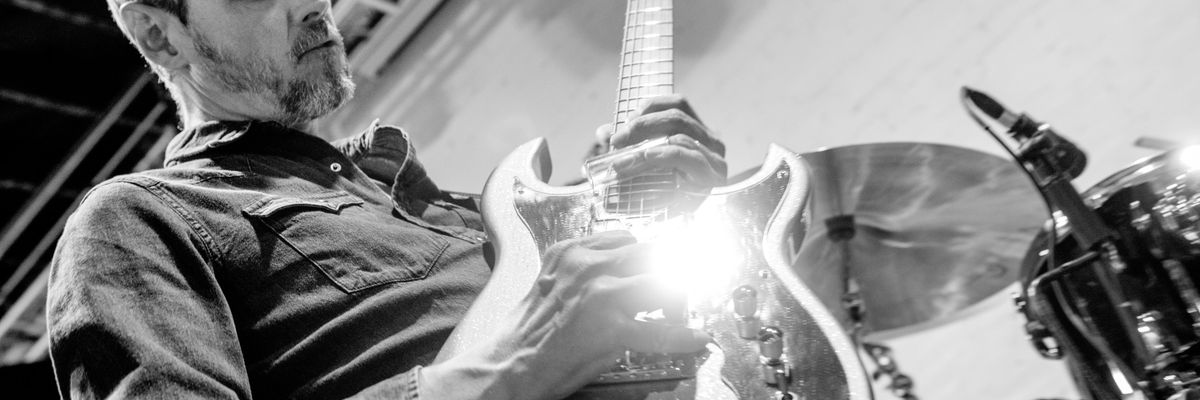
Question: What’s your No. 1 amp and why do you play it?
Guest Picker
Luther Dickinson
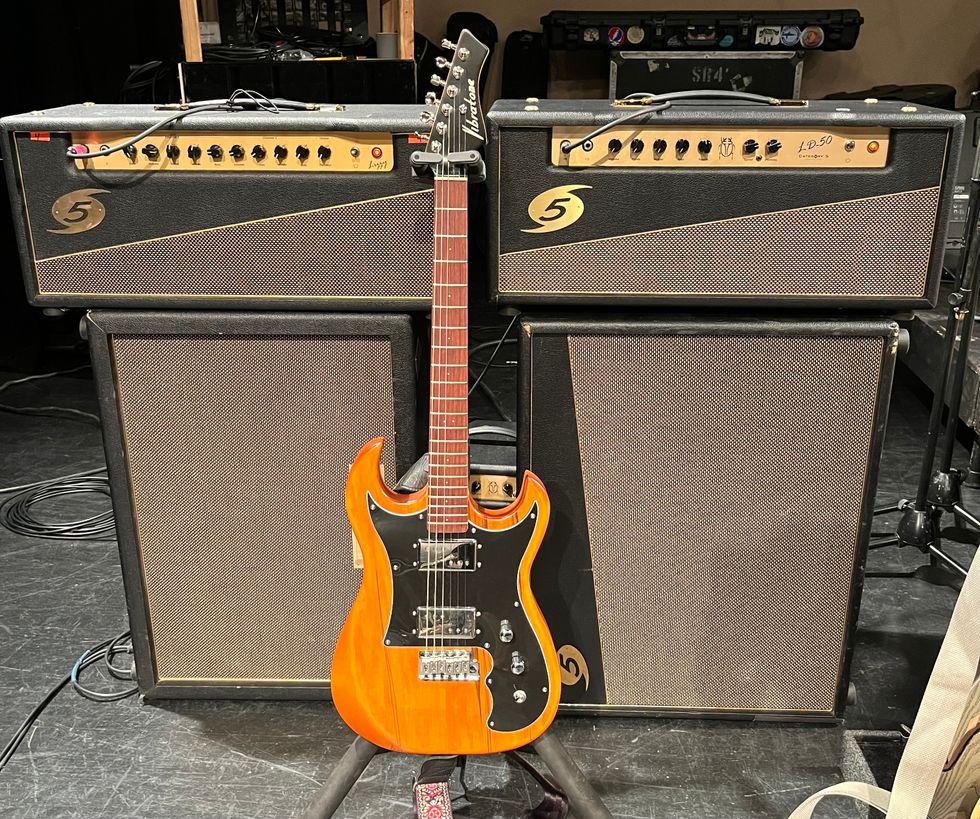
A: My main amp on the road is my signature Category 5 LD100 (or LD50 in a small room). Don Ritter and Barry Dickson of Category 5 and I designed this amp similar to a 100-watt Marshall plexi, but with nice subtle spring reverb and a groovy tremolo that goes from very slow to very fast with a foot pedal controlling the speed.
- YouTube
Obsession: Live Prince concert footage does not count because that’s constant, but I’m thrilled by Tolgahan Çoğulu and his microtonal guitar YouTube page! As a slide player I’m familiar, even intimate, with some of the microtones they utilize with these amazing guitars with movable modular frets, and thus I love his music, approach, and this scene (including King Gizzard and the Lizard Wizard).
READER OF THE MONTHSteve Rempis
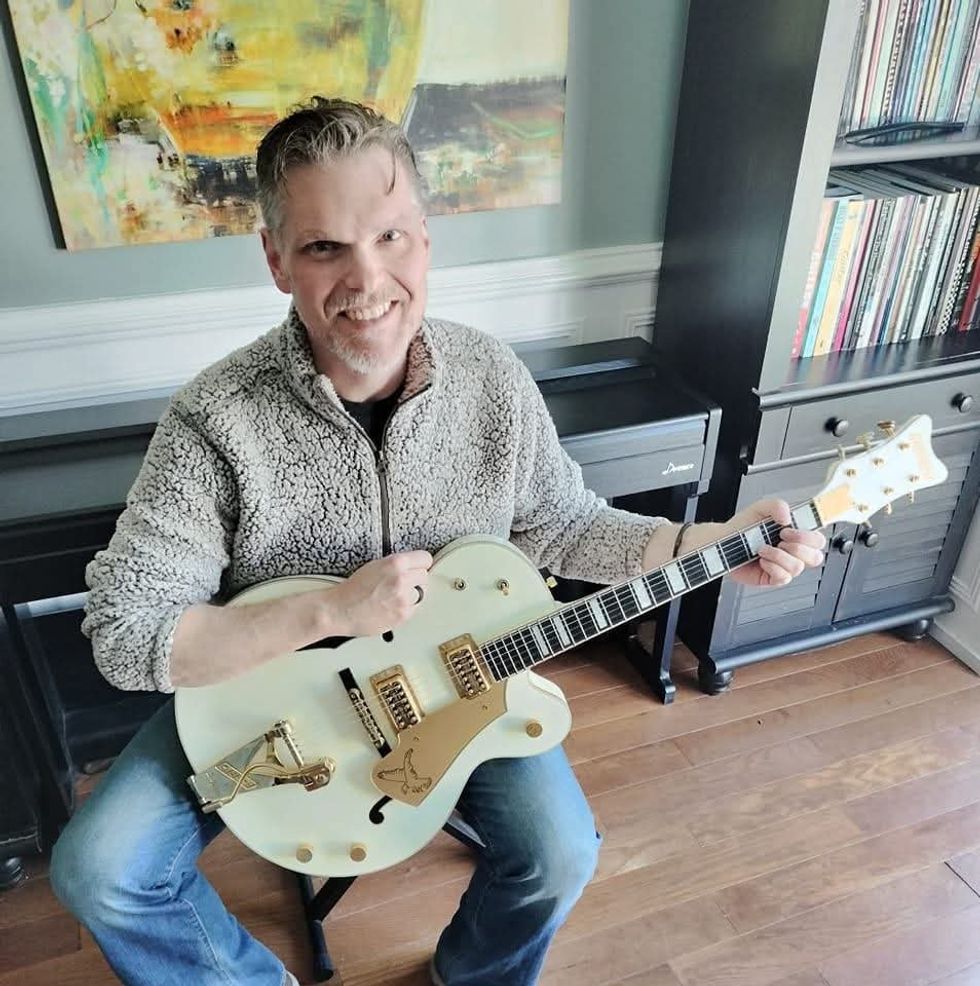
A: Having recently embraced doom metal in a big way, I started on a quest to find the perfect amp for getting a distinctive tone and taking fuzz pedals. After trying all the usual suspects, I stumbled upon a circa 1972 (just like me) Kustom Hustler 4x10 combo. This amp gives me what I consider to be my ideal doom tone, especially when the bright switch is engaged (contrary to conventional wisdom). I pair the Kustom with a Roland JC-40, which handles all my time-based effects. My rig looks and sounds unique, and most definitely dooms!
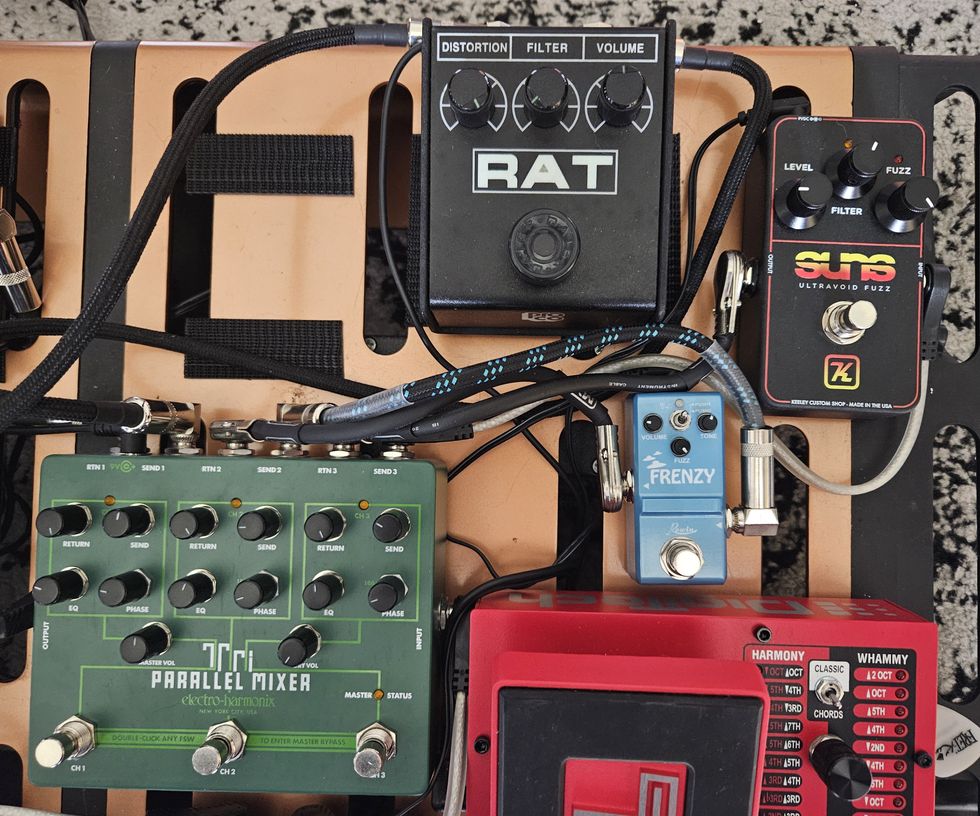
Obsession: My current obsession is parallel fuzzes. When looking for my perfect fuzz sound, I found that I had three pedals (a Pro Co RAT 2, a Rowin Frenzy, and a Keeley Suns) that didn't get me what I wanted in isolation, but each did great things as part of my tone spectrum. The obvious solution? Run all three! A little internet research led me to the Electro-Harmonix Tri Parallel Mixer pedal, which allowed me to run all three pedals together as separate signals which were then combined at the output. No “stacking” required. I now have a “best of all worlds” fuzz sound that brings a big grin to my face every time I plug in.
Charles SaufleyGear Editor
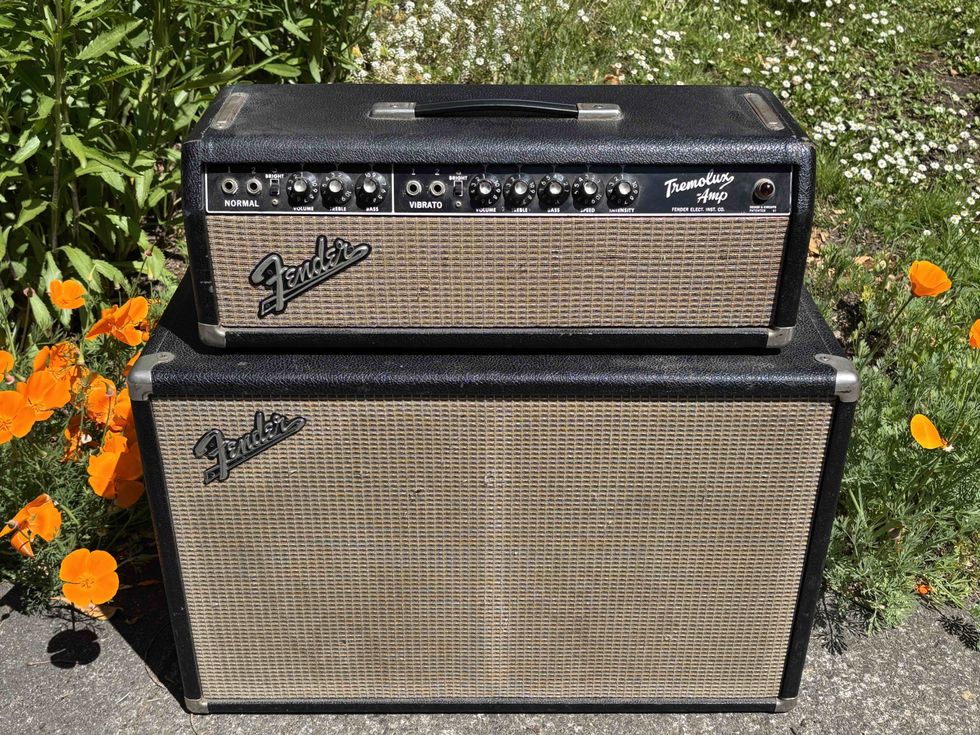
A: My 1964 Fender Tremolux is my first amp and it’s certainly the last one I would ever sell. For my purposes, the Tremolux, with its 30 watts and tube rectifier, deftly splits the difference between a tweed Fender’s squish and growl and a black panel’s clarity and immediacy—a nice lane for a lad that counts circa-’69 Crazy Horse, early-’60s South Bay surf, and Mod-era Pete Townshend as tone ideals. With a Fender Reverb unit and an Echoplex out front, it is pure joy.
Obsession: Making space in mono mixes. It’s a great workout for the ears, a cure for option fatigue, and reinforces and encourages smart arrangement decisions. But as an individual that marvels at the potency, punch, and sometimes spooky ambience heard in mono records, it’s fun chasing the magic that lurks in those slabs of wax.
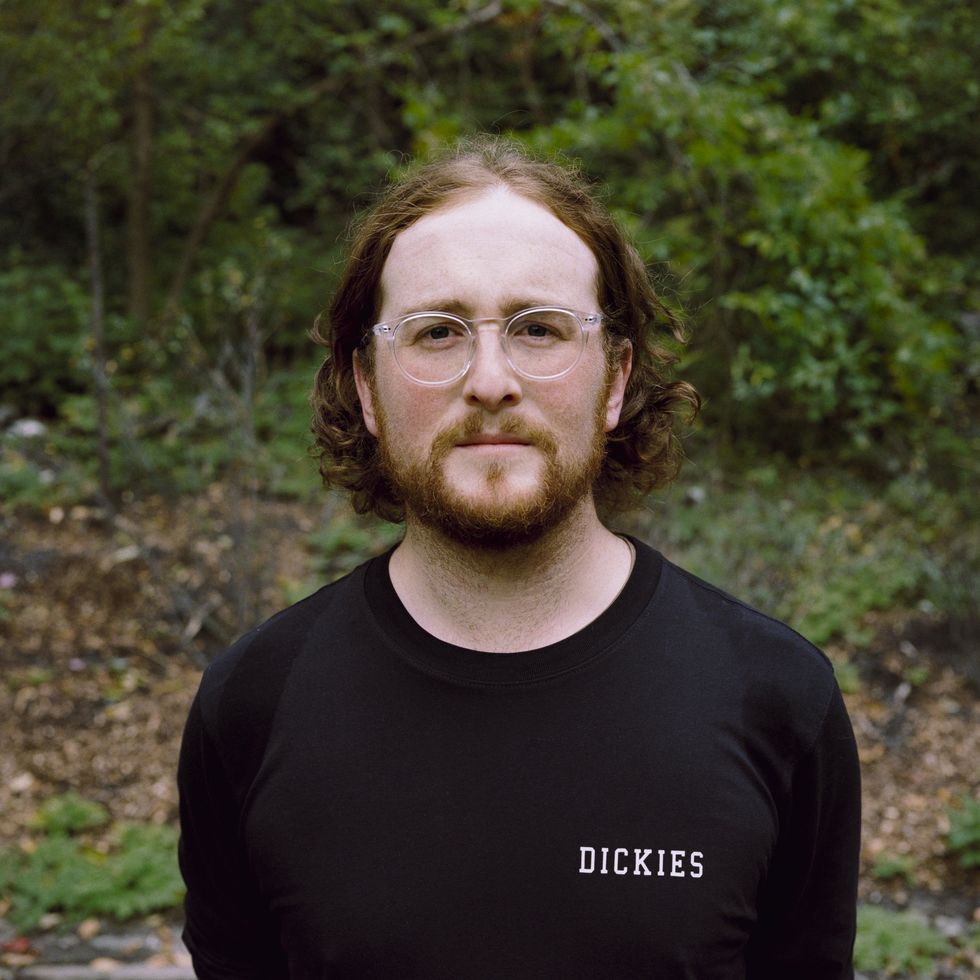
A: My Dr. Z Maz 18 Junior 2x10 combo has been my dream machine for about 11 years now. It’s a Mark I model, with reverb. A few months back, it wasn’t keeping up with my band at a show, so I started looking around for a used amp in the 50-watt range. I went through a few heads and cabinets only to end up back at my Z, which I paired with a Fryette PS-2 to raise its wattage to 50. Maybe 11 years of Z has just cemented my amp’s frequency range in my brain, but whatever the case, it just feels like home.
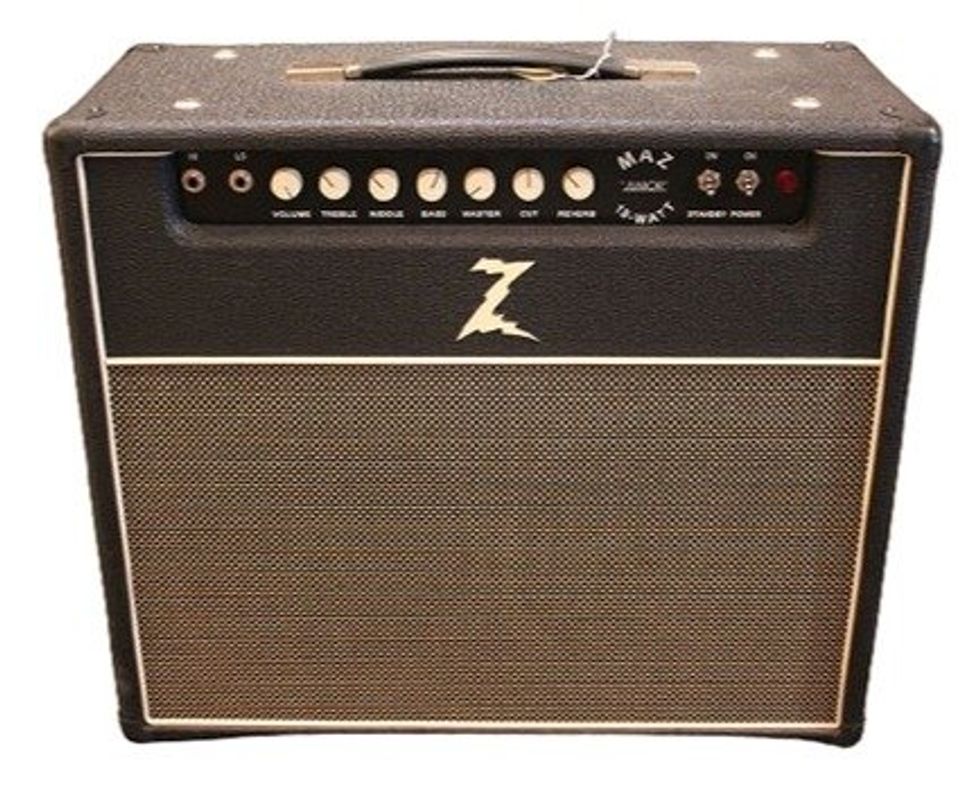
Obsession: Finding the perfect balance between chime, depth, and aggression. I favor single-coil tones that have a lot of pluck and definition, but striking the right harmony with top-end clarity and thick, characterful distortion is tricky. Blue Colander’s Crooked Axis, a massively expanded take on the Colorsound Power Boost, has been getting me there the past few months. But I have started to wonder: Can I depend on my ears to dial in the sound I want, or have I lost enough high frequencies in my hearing that I’m not a reliable tone sculptor? Overthinkers anonymous, unite.
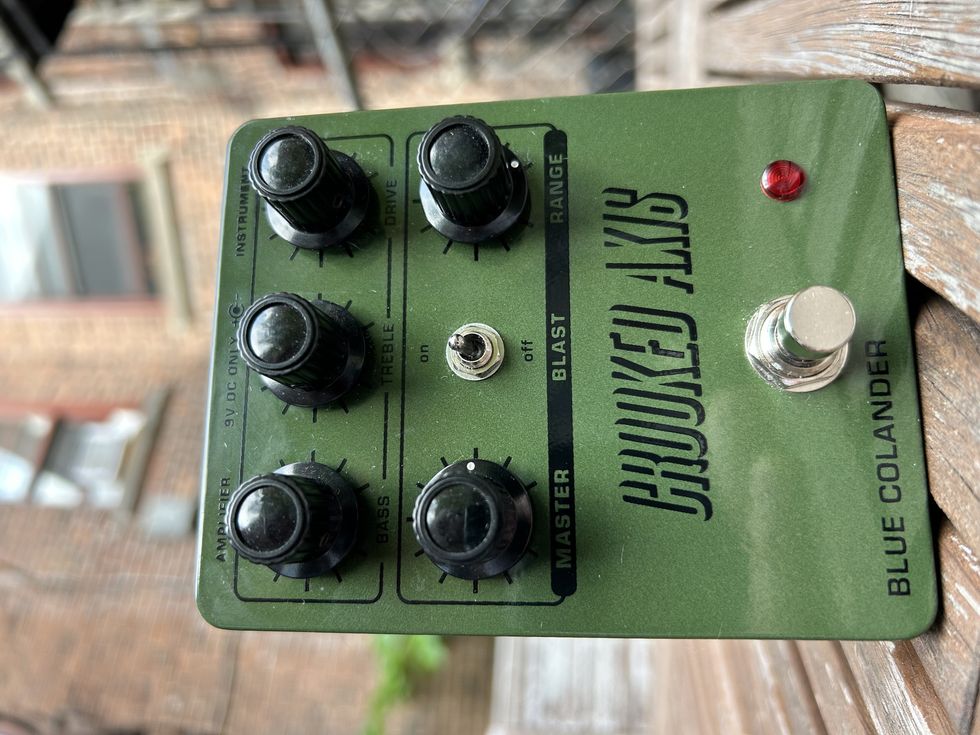
The Funky Bass Continuum: Bootsy Collins and MonoNeon in Conversation
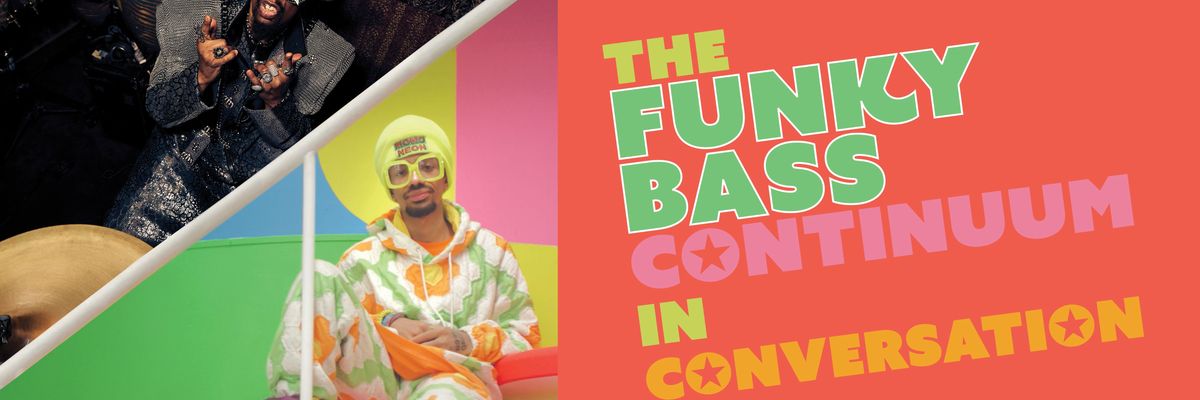
The word “parallel” is easy to use to describe bass luminaries Bootsy Collins and MonoNeon. Both are remarkably distinctive, not only in their playing style but in their fashion, and they both exist on the leading edge of musical and technological trends. And both innovators have what seems to be everything: signature model instruments and effects, adoring fans across the globe, and the biggest and most important attribute of all, humility.
The career paths of these two have been eerily similar, albeit decades apart. Collins, who is 73, electrified the club scene in Cincinnati, eventually being handpicked by James Brown to join his band. Prince caught wind of MonoNeon, who is 34, via his clips online, and soon the young bassist was standing next to Mr. Nelson at Paisley Park, bringing new energy to the Purple One.
Both have just released new records. MonoNeon’s You Had Your Chance … Bad Attitude blends funk and soul with dashes of heartbreak and humor, adding to his extensive list of releases. Bootsy has dropped his Album of the Year #1 Funkateer with a fury, collaborating with Snoop Dogg, Fantaazma, Eurythmics’ Dave Stewart, and Ice Cube to blend classic funk with modern grooves.
In our hour-long bass conversation, we talked about church, family, and finding your voice in the world, and I was genuinely surprised to hear the tech-savvy approach of the “old guard” Bootsy and the “old soul” approach of the social media influencer MonoNeon.
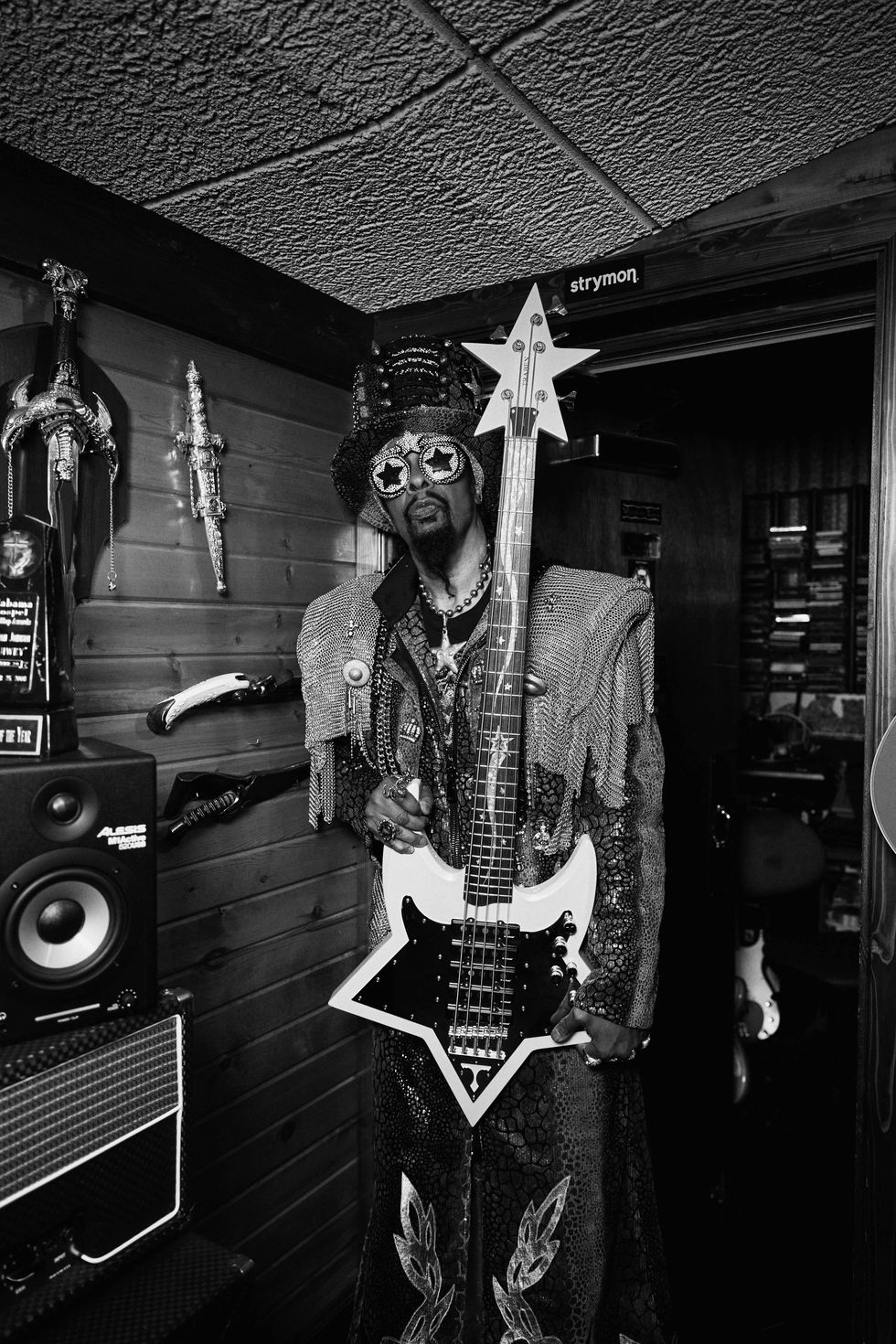
Bootsy Collins: What year did we meet, and you did the bass thing on my record?
MonoNeon: Two-thousand-sixteen. That was with [drummer] John Blackwell.
Collins: That’s right. That’s when we really got together in person and started hooking up. I checked out Mono on Twitter at the time, and he had such a style and he used the instrument not just as a bass; he took it and communicated with it, showing people that whatever you are saying you can speak through music. It was pretty incredible, because in my day, coming up, that was like a breath of fresh air.
Bringing musicality to everyday life was that extra step.
Collins: Then the other step was that, you know, he has his grandma on. Kids don’t do that. They want to get away from their parents, and here’s this young cat coming up, sitting with grandma, going to church. So I had to meet this cat.
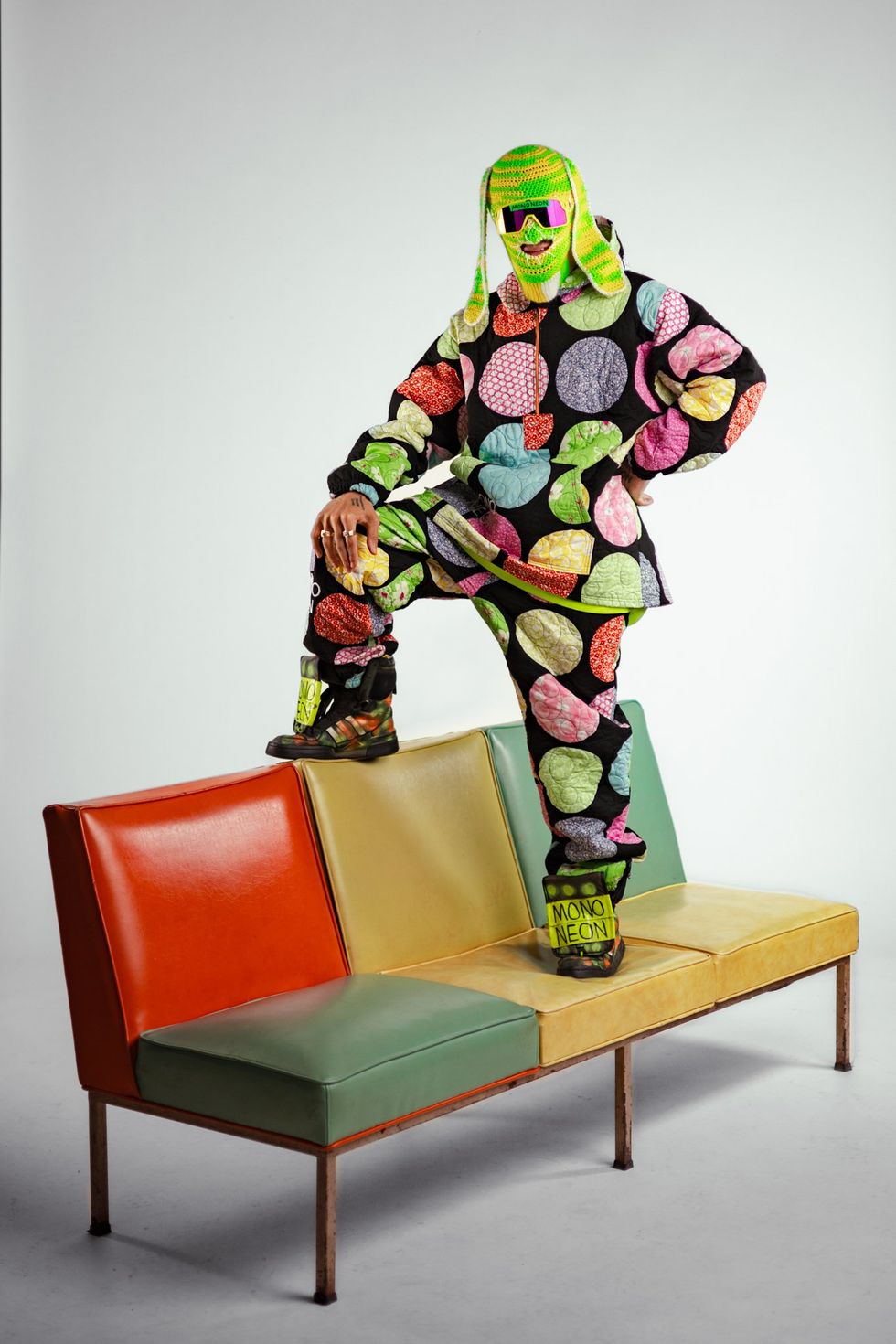
You bring up church—did you guys play in church?
MonoNeon: Oh yeah. I grew up in church. Grandma used to take me to a Baptist church in Memphis. I started playing there at age 9. It was intimidating. There were a lot of great musicians there.
Collins: There’s nothing like it. Maybe if we hadn’t started there, we wouldn’t be where we are now. That’s the “one.” You start right there, then grow. You can be away for a minute, but that feeling never leaves you. If you don’t have church, though, you don’t know how far is too far. That’s one side; then there’s another side, the Holy Spirit, where you aren’t acting, you’re just being yourself and playing and letting this spirit take over. I know Mono went through that sort of vibe with Prince, too.
Walk me through when Prince brought in a new track or idea.
MonoNeon: I always just waited on Prince to tell me what to do. I would do my thing on it until he told me “don’t do that.” He always let me be myself.
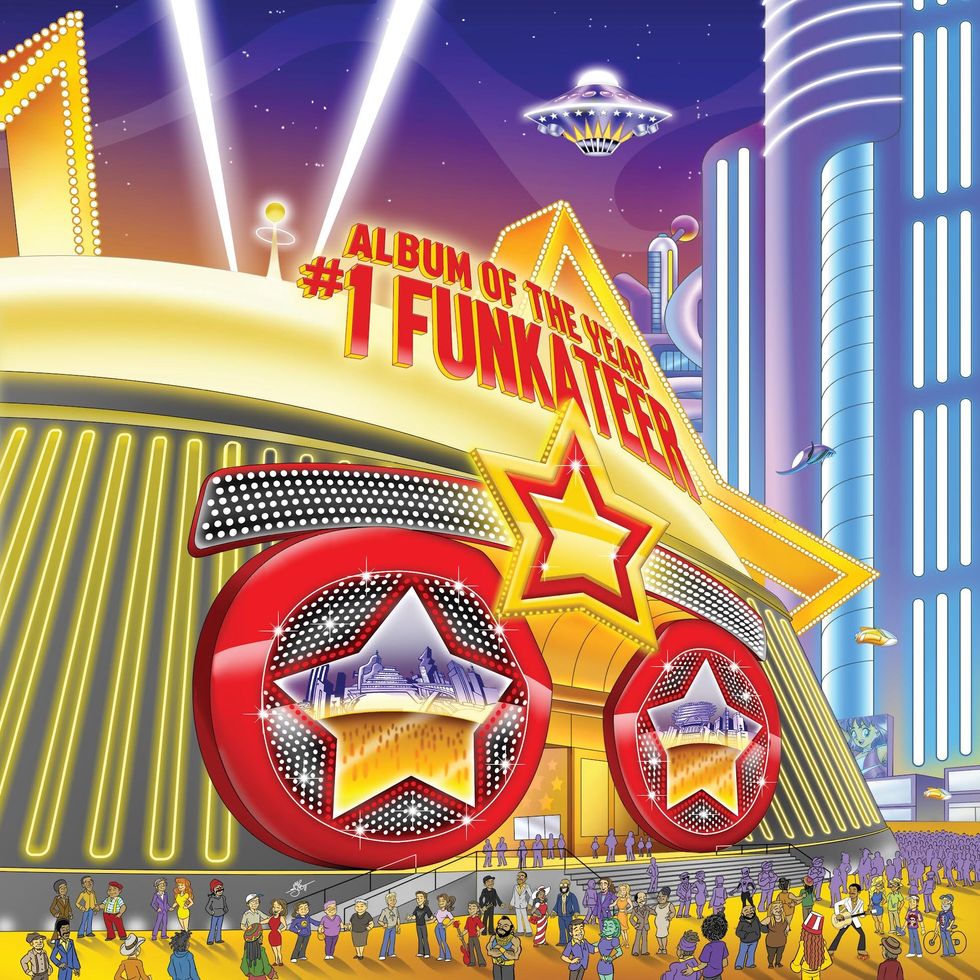
You mentioned John Blackwell earlier. What a force. Let’s talk about drummers for a minute. What do we like in drummers?
MonoNeon: Well, for me, the drummer has to have a lot of personality. He has to have great sensibility and just be fearless. I really don’t care about a lot of chops.
Collins: With me, my heroes were Clyde Stubblefield and Jabo Starks. And I never could dream of getting the opportunity to play with them. When they came to record at King Records here in Cincinnati, my dream was to at least meet them. I wasn’t even thinking about getting a chance to play with them. It just happened to turn into a relationship once James Brown hired us [Bootsy and his brother, guitarist Catfish Collins], which was unreal at the time. Standing in between those two … Clyde was fire. He was just fire. And Jabo was just the watery, jazzy, swinging-type drummer. A lot of people don't know the difference in their styles. You know, they just say “James Brown drummers,” but James would use either Jabo or Clyde to record, depending on the style of the song. James knew.
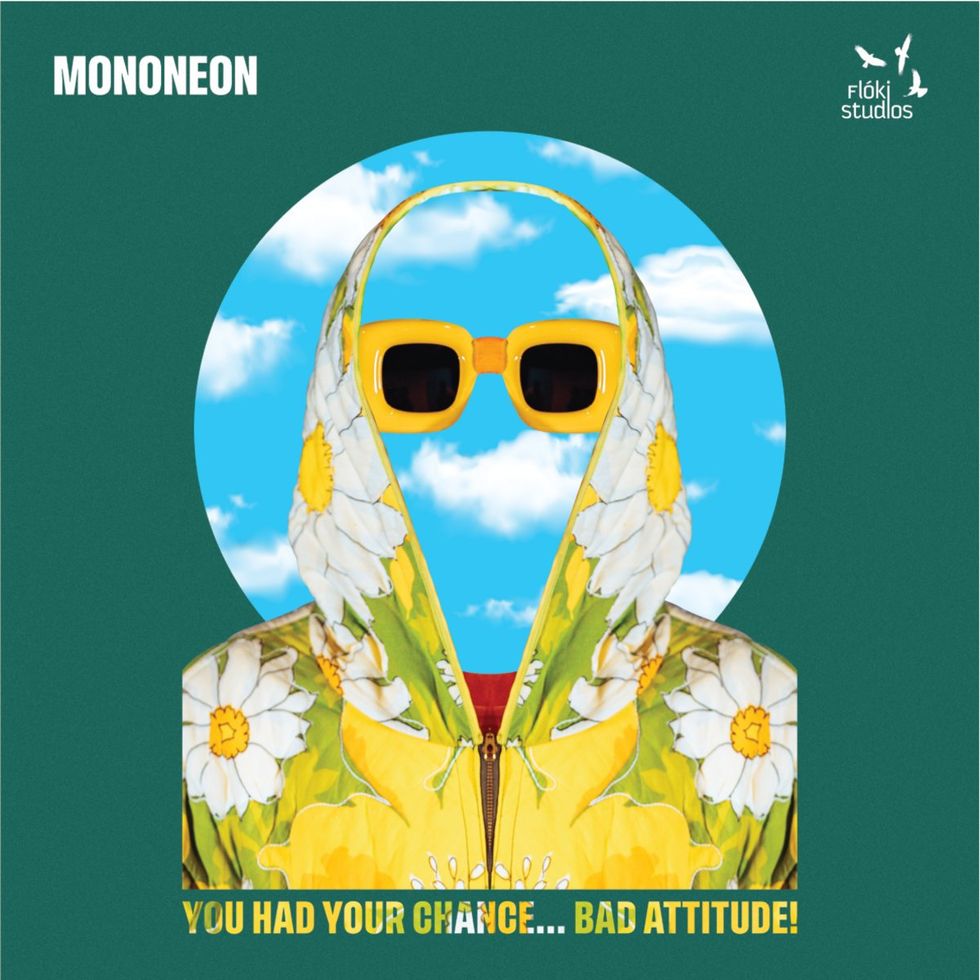
Tell me more about James.
Collins: The way he treated me and my brother was, “Y’all go ahead and do your thing,” much like Prince with Mono. It was more about our energy coming into the studio rather than his. James would tell us parts in advance, and he was looking for that young energy. James would let us go into the studio before he got there, and we would be in the room grooving and James would come in, like, “Keep it going, keep it going, start the tape.” He’d start the tape up, he’d run out there to the mic and just start yapping—ha!
Where did you track with James?
Collins: We recorded in Muscle Shoals, Alabama, and Criteria down in Miami. King Records here in Cincinnati is the main one. We’re actually in the process of revitalizing the room and getting it up and cracking again. We think there is a lot we can do for the music and the historical side of the scene here.
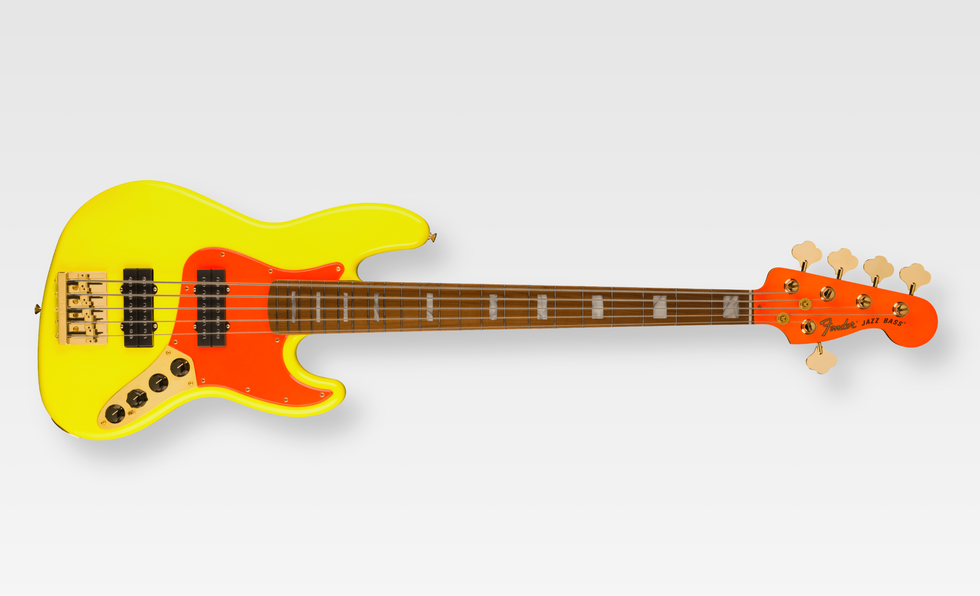
Speaking of the scene, Mono, you are in Memphis. You grew up with the Stax Records location right down the road and Beale Street not too far away. Your dad, Duane Thomas, is a bass player with some big credits as well. What records were on the family turntable when you were little?
MonoNeon: Probably some stuff my dad played on. My dad used to play with Denise LaSalle and Mavis and Pop Staples, so I was listening to all that. My dad also played with the Bar-Kays in the late ’80s. I had music from church and the records my grandma was playing as well—blues like Jay Blackfoot and Johnnie Taylor. That’s why I’ve got an old soul now, because I was hearing all that shit.
What was the scene in Cincinnati like in the late ’60s and early ’70s?
Collins: Well, at one time it was a great, great scene because you had clubs everywhere and all the bands were working. We’d go and sit in with each other. Roger Troutman, Ohio players, Slade, all these mugs were just working in clubs. And it was an every-night situation. The scene was beaming with clubs and places to go and places to do things so you can show your talent. We didn’t have the computer thing, online and all that, so you actually had to be somewhere to show what you got. We used to walk in clubs and have our instruments out. When you walk in like that, you kind of demanding, like, “We coming to take your gig,” you know? We [Bootsy and Catfish] always brought it. So, we had the reputation going. Then everybody kind of knew, oh, them Collins, them Muppets. That’s why James was looking for us.
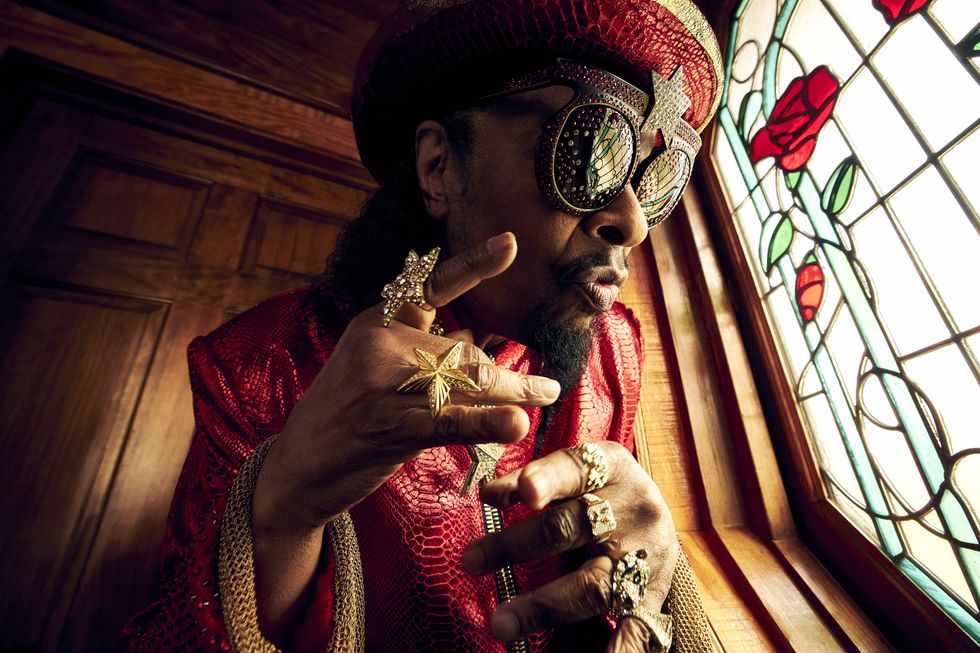
You both have new records. Tell me about the process of making them.
MonoNeon: It’s really just trial and error for me. I sit down at the keyboard and try to figure out harmonies that feel like me. It’s seeing what works or not. I try leaving that space open for whatever comes.
How do you map it out? Is it bass parts first then everything else? Do you chart it out as you go?
MonoNeon: I don’t chart anything out. I just open up my DAW—Logic—and get on the keyboard and figure out some shit. I make a beat first, usually, especially when I’m working by myself. The guy I work with in L.A., David Nathan, we write songs together, and he’s a great songwriter and producer. So when it comes to songwriting, it’s easier to narrow ideas when I work with him. He’s like a brother to me. So, I trust him with my vision and what we want to do. But since I’m so quirky, he knows my quirks, so he’s able to flesh it out. I am definitely learning more about songwriting being around Davey as well.
Bootsy, you have moved into more of a producer role for your new record and have some heavy guests. How do you adjust for each one?
Collins: I guess for each song the process really is different, and they come to you differently as well. Back in the day when I was coming through with George Clinton, Parliament-Funkadelic, we got a chance to just vibe a track out, because we always had the band with us. Today is totally different. I might say, “Mono, I’m gonna send you a track and check it out and see if you hear anything on it.” Then he’ll get back and say, “No, I ain’t feeling it.”
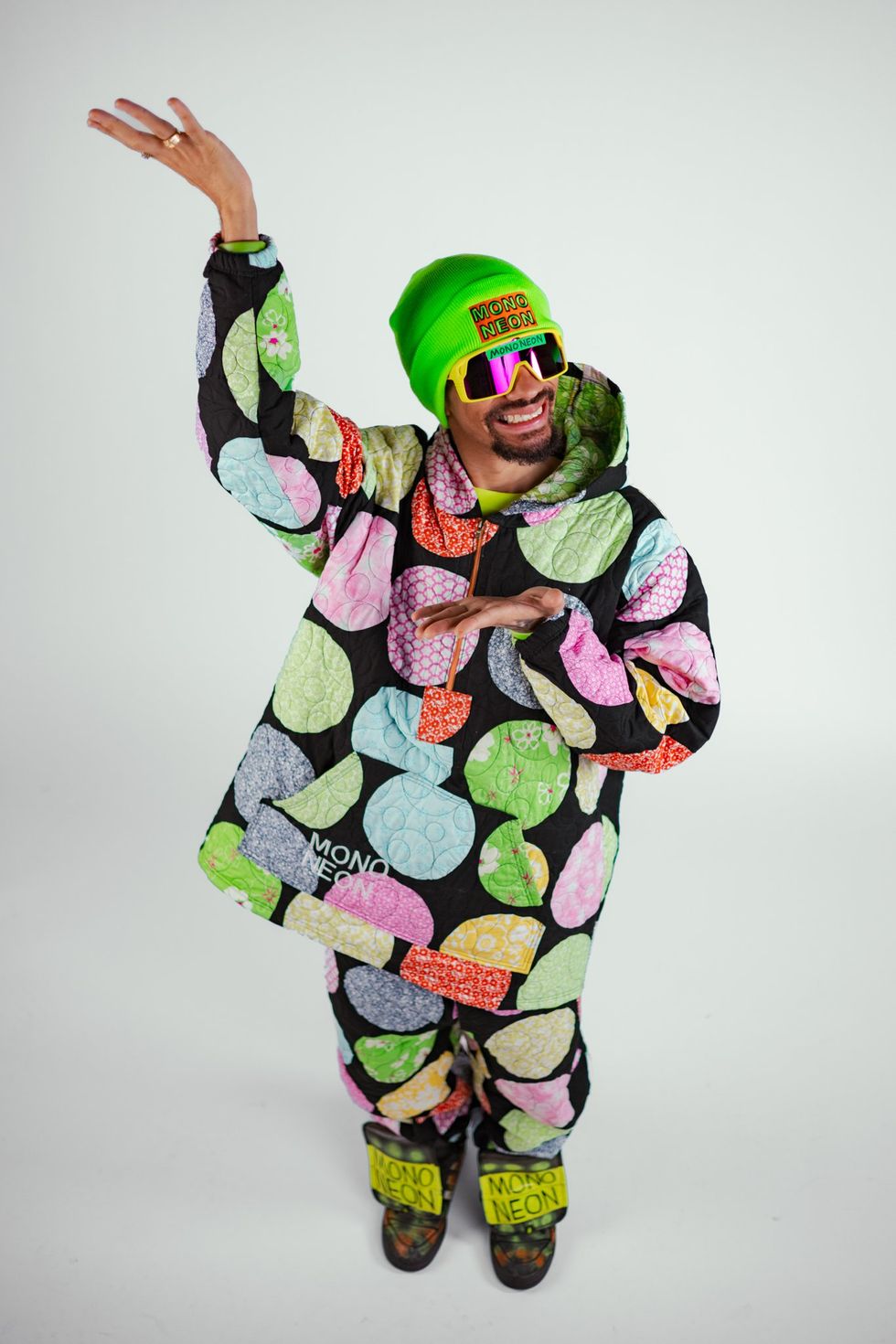
MonoNeon: C’mon!
Collins: I mean, he ain’t done that yet. Mono always comes up with it, sends it back, so I am always learning. I think with this new record, it gave me an opportunity to learn even more. For example, a few of the songs I did with Dave Stewart, he’s playing acoustic guitar, because I wanted to do some real songs—ones with less groove jams and more structure. That’s something I’ve never done. I’ve always played experimental stuff that comes off of my head. I’ll jam with this groove, or I tell a band what to play, and here’s the tempo. But on this record, each song is different. If I’m going to use a rapper on a song, I’ll write something in that rapper’s style. I probably will never be exact to the genre, and I ain’t trying to be. That’s the good part about it. For me, you know, it’s always wanting to do something different and new. I wanna keep learning different things from different cats, and I feel like we are transmitters and receivers. And if you don’t shut up, you’ll never receive.
MonoNeon: I guess we got good ears and we just hear everything. I don’t consider myself a producer; I just do stuff.
Collins: That’s the attitude that I liked about Mono even before I knew him. You can just tell certain cats got a certain vibe that you already know that you’re gonna gel with them, and that’s why we are closer than we even know. Bass players become producers. We can become anything, you know? But the main thing is we use instruments to communicate. And instruments ain’t just what I play, it’s what I wear—my fashion is an instrument, my glasses are an instrument, you know? My tone, I mean, everything that a bass player uses, is a part of him. We can’t track that stuff; it’s just us.
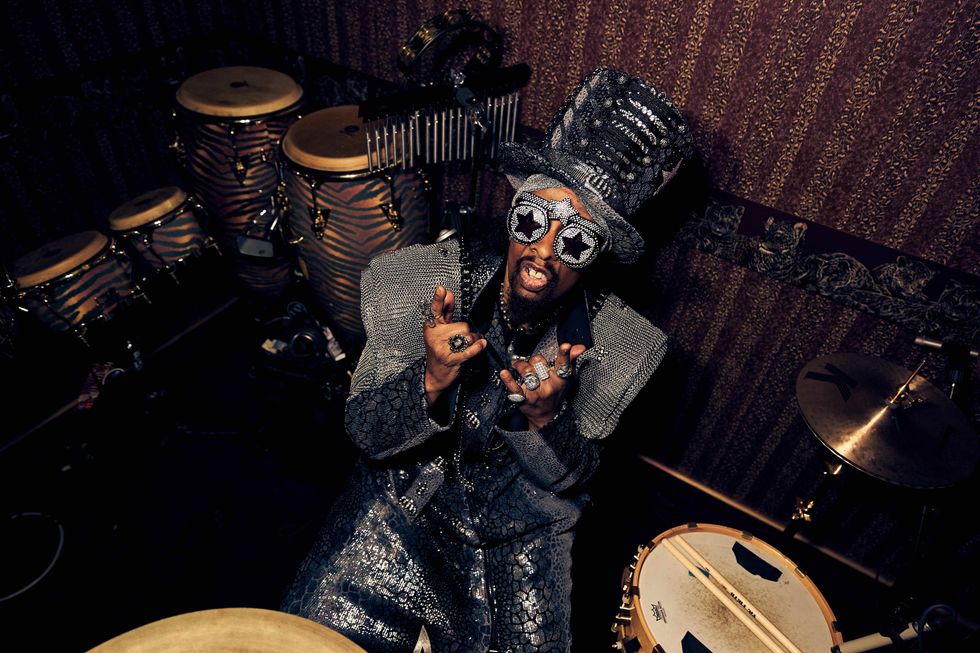
Since you mentioned tone and this is a guitar magazine, what are your two desert island effects pedals?
MonoNeon: Ooooh, I guess my Whammy pedal and my Fart pedal.
Collins: For me it’s my Mu-Tron and the Big Muff. That’s what I started with. If I can sneak in a third, it would be a Morley wah with the fuzz.
Mono, when did you jump into effects?
MonoNeon: Kinda early on, but I didn’t really apply it to anything. My use of the Whammy pedal came from being around Prince. I was just watching how he was stepping on it. He had so much swag. I wasn’t really listening to it, I was really watching how he was using it. I just started applying it to what I was doing and cultivating it.
Collins: That became his Mu-Tron. That became a great move.
Summer School Electronics Announces Middle School Chorus
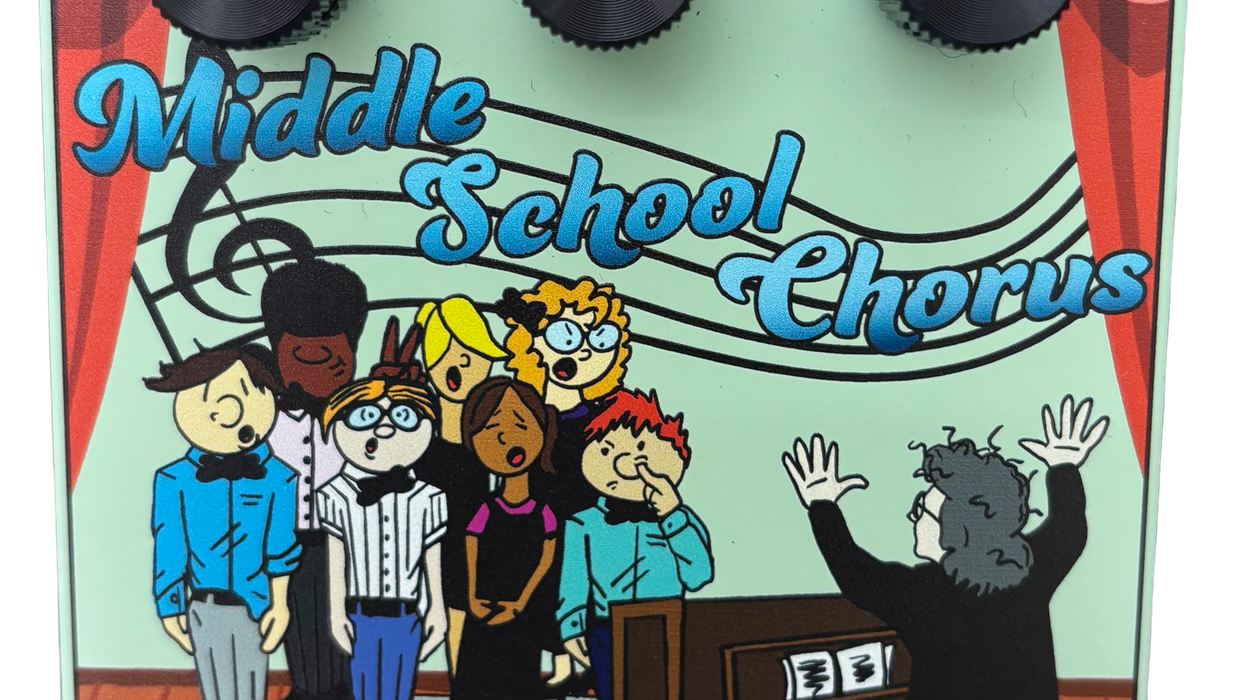
Summer School Electronics Middle School Chorus is a modern take on an 80’s classic.
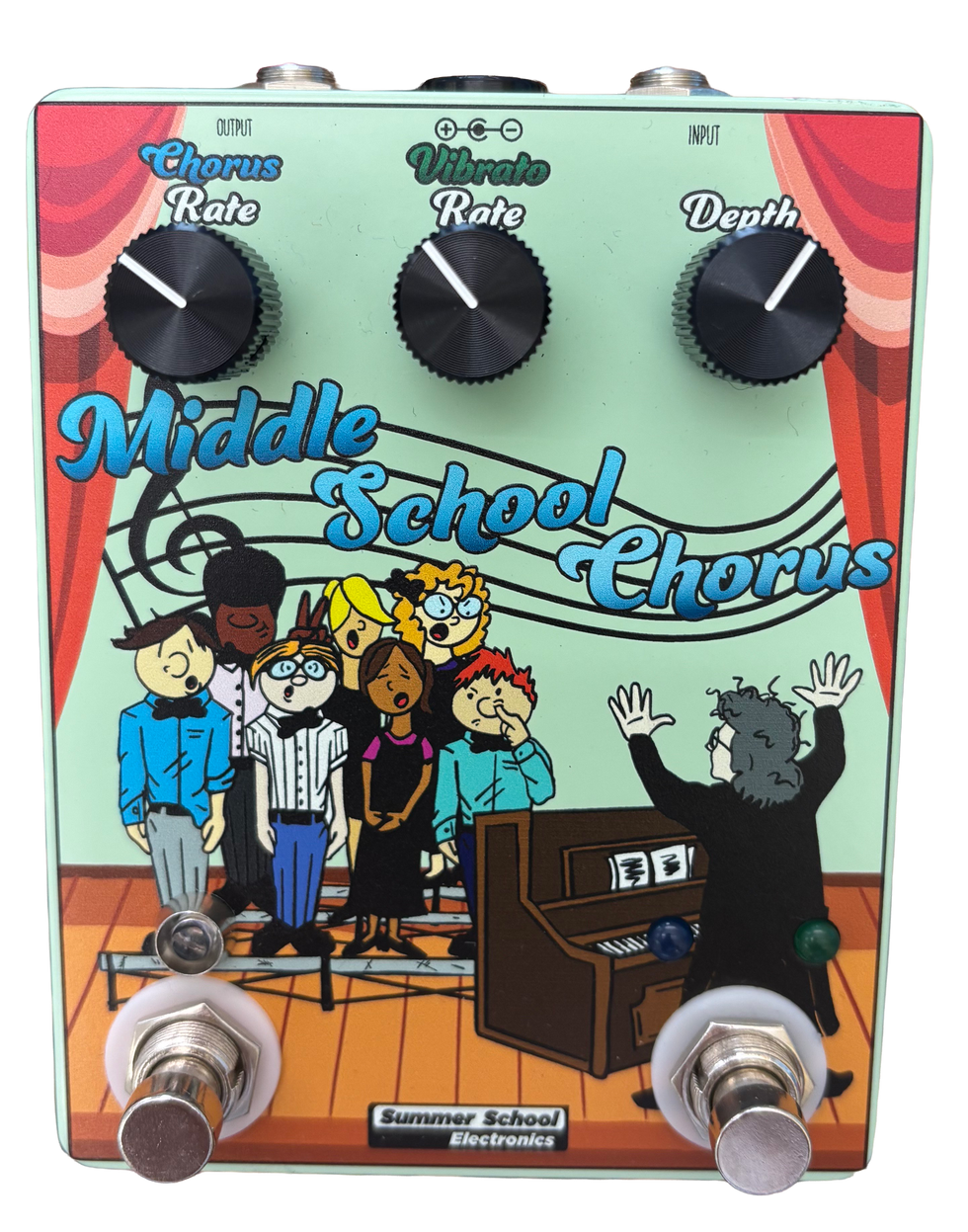
The Middle School Chorus is a unique dive into modulation that saves pedalboard space and opens a world of sonic options. It combines both a chorus and vibrato effect into one stompbox, allowing the effects to be changed with the tap of a foot. This pedal has a wide range of modulation, from classic 80’s chorus-tones to wet, modern guitar sounds. When the blue light is on, the pedal is in Chorus-mode and can be adjusted by the Chorus Rate and Depth knobs. When the green light is on, the clean signal is omitted and the pedal is in Vibrato-mode and can be adjusted by the Vibrato Rate and Depth knobs.
Each pedal offers the following features:
• Separate Chorus and Vibrato Rate controls with a shared Depth control
• Footswitchable Chorus/Vibrato feature
• Hand Built in Syracuse, NY
• Lifetime Warranty
• 9-volt operation and standard DC input
The Middle School Chorus is available at Summer School Electronics dealers, at a street price of $199.99 as well as online at summerschoolelectronics.com.
“An arresting, unsettling, sometimes unpredictable effect – and in that sense it nails the Deftones brief”: KHDK Digital Bath review
Embracing the Great Unknown (Artists)
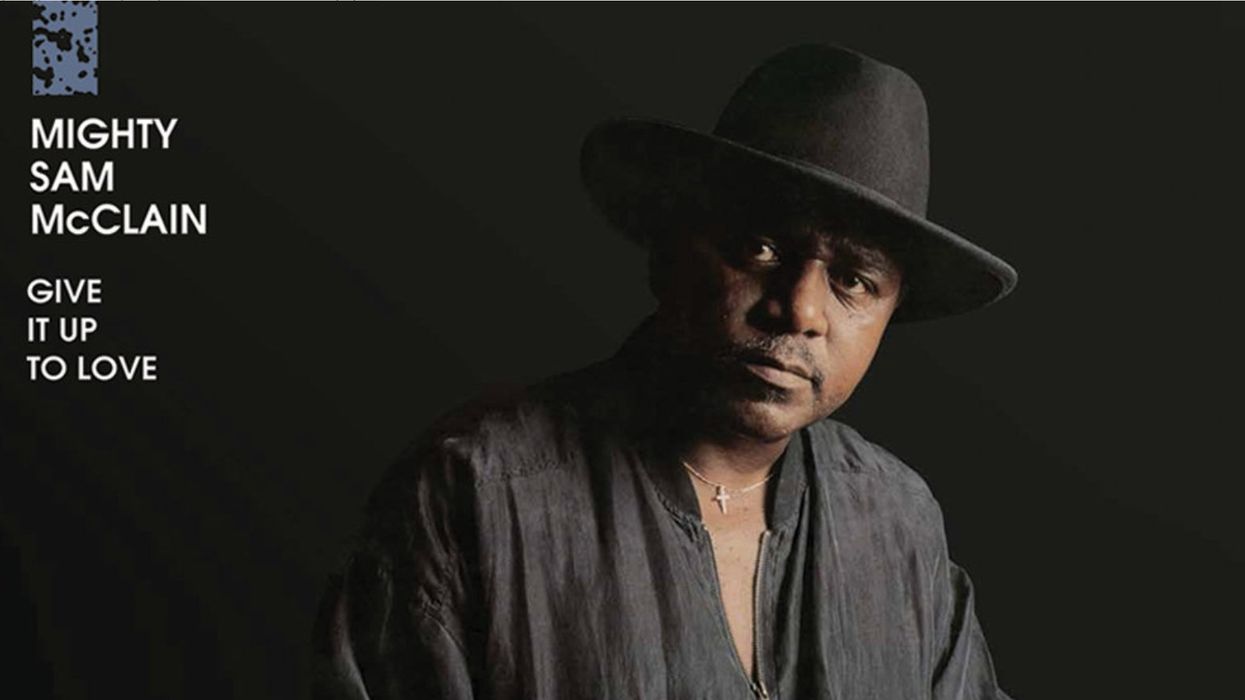
I recently watched a documentary on Nashville’s songwriting culture called It All Begins with a Song, and while it was an occasionally insightful and touching look at the tunesmithing industry, it omitted an important part of Music City’s creative community: the writers who fly under the mainstream's radar, and yet craft equally—if not more—satisfying numbers that hit deep emotional notes and tell profound human stories.
I get it. More viewers would like to watch how the songs they’ve heard were built than songs performed by artists who’ve not, for a lack of luck, financial support, or other business machinations, reached their ears. And yet, I felt the film missed an opportunity to enlighten people to a different kind of Nashville songwriter—a breed of artist less slick in, perhaps, the writing of Top 40 hooks, but sometimes more attuned to the rawness and complexity of real human experience. Writers who have the ability to capture humor, sadness, and life without flounced dressing. I’m thinking of artists like Buddy Miller, Kevin Gordon, Jon Byrd, Tim Carroll, and even Emmylou Harris—the latter a cross-generational bridge with the ability to create a beautiful latticework of words and music with her lyrical skill and unmistakable voice. (Note: Listen to Gordon’s “Colfax,” for example, and you’ll enjoy one of the most complex-yet-accessible stories about adolescence, small-town America, and race put to song.)
My point is this: When it comes to every aspect of the music you love, try to dig deeper. If you love guitar, and I know you do, don’t stop with Jeff Beck, Carlos Santana, Josh Homme, or Jack White. Find out about the outliers like Sonny Sharrock and Yvette Young and Stan Lassiter, or, if you dig blues, Junior Kimbrough. They are all uniquely and brilliantly themselves. And Tom Waits is the rare example of an outsider songwriter who has penetrated the mainstream, and a damn fine one.
“There are great artists flying just under the widescreen radar everywhere that music is played and stories are told.”
I’ve chased artists like this, and the songs and sounds they make, for my adult life. If I had to blame it on anyone, it would be Johnny Cash, whose unadorned music and poetry, punctuated with surprising vocal approximations of train whistles and shouts of “sooey,” spun my head around and opened my ears to the world when I was a child. (Cash was, perhaps, the ultimate outsider insider.) And because of this pursuit, and my decision to become a music journalist as well as a player, I’ve been able to speak with and even be befriended by quite a few of them. Their stories, whether in words or sounds, have profoundly shaped my perspective, character, and creativity. They influenced me to become and remain a storyteller, one way or another. Heck, some, and especially the late Mighty Sam McClain, the greatest soul singer you’ve probably never heard, even became my chosen family. In Sam’s case, a second and better father, whose voice echoed between the Earth and the stars. (Listen to his interpretation of Carlene Carter’s “Too Proud” for a jolt of scarred honesty, then explore his catalog.) The same with R.L. Burnside, who shaped my thinking as a guitarist and a human in ways I’d not realized until they were ingrained.
There are great artists flying just under the widescreen radar everywhere that music is played and stories are told. It just takes a little more effort to seek them out. Chances are, if you choose to speak with one of them after a performance or even through social media, you might make a connection. It could be a one-off exchange or it could be a new friendship, because life has a way of taking you down unforeseen roads if you are willing to take the first step onto them.
You might even be one of these artists yourself. If you are, you have my respect for striving forward, in search of the essence, the expression that helps the world fall into place for you and those for whom you record and perform. You may be underacknowledged but you are doing essential work. And you understand that it truly can begin with a song or a sound.
“The truth of the matter is, I don’t believe that anybody asked us”: James LoMenzo reveals Megadeth weren't invited to Ozzy Osbourne and Black Sabbath's final show
“It’s obvious to me why you’ve already had success”: Frank Sidoris shares heartwarming rejection letter he received from Ozzy Osbourne after auditioning to be his solo guitarist

Paying tribute to Ozzy Osbourne – who died earlier this week at the age of 76 – Slash guitarist Frank Sidoris has shared a rejection letter he received when auditioning to be Ozzy’s guitarist in 2017.
Back in 2017, Black Sabbath’s The End reunion tour was just finishing up, and Ozzy felt inspired to hit the road solo. This involved searching for a new guitarist, and as Sidoris recalls in a now-expired Instagram Story: “I was invited to Ozzy’s home to perform two songs for him to audition for his band”. The audition, it turned out, was rather up close and personal.
“We loaded my amp, guitar, et cetera, into his movie theatre, and I played Mama, I’m Coming Home and Diary of a Madman while he sat about 10 feet away from a very loud amp – at his request.
“He sang every word over me, playing at concert volume, which was comforting and hilarious, as it was just him and I in the room with his assistant.”
Ultimately, Sidoris didn’t get the job – that went to Ozzy’s tried and tested guitarist Zakk Wylde, who had played alongside the Prince of Darkness for years.
Perhaps feeling guilty about his decision, Ozzy wrote Sidoris a rejection letter.
“Frank, I wanted to thank you for coming by to play for me and taking the time to learn my songs,” the letter read. “You are a talented musician, and it’s obvious to me why you’ve already had success in this business at a young age.
“I’ve decided to work with Zakk Wylde, writing and recording my next studio album as well as playing guitar on my upcoming tour dates this summer. Zakk has been with me a long time, and I know that having him play with me is something my fans really want to see.
“I wish you continued success. God Bless, Ozzy.”
The letter was signed by Ozzy and featured a cartoon of him carrying a large cross that reads “OZZY” in the bottom righthand corner.
Now, Sidoris reflects on how he felt at the rejection, and at receiving the letter from Ozzy.
“It further proves he was truly everything you would hope for as a person,” Sidoris says. About the intimate audition itself, he adds: “It was an honour to be in his welcoming presence and feel his genuine warmth as a person.”
The post “It’s obvious to me why you’ve already had success”: Frank Sidoris shares heartwarming rejection letter he received from Ozzy Osbourne after auditioning to be his solo guitarist appeared first on Guitar.com | All Things Guitar.
“I didn’t know their tunes, but we played some Chuck Berry and reggae, then Paul McCartney said, ‘What are you doing for the next few years?’” How Laurence Juber went from winning a Grammy with Wings to landing a hit record with Harry Styles
“Martin and Taylor, watch out. There’s a new small-bodied build on the block”: This is all the new guitar gear that has caught my eye this week – and I think I've been convinced to finally go wireless
Totally Guitars Weekly Update July 25, 2025
July 25, 2025 This week I was bitten by a bug from the past. In an earlier life I spent a lot of time playing Renaissance and Baroque music, on the guitar at first. But a couple years into that obsession I decided to get a lute and play John Dowland’s music on the instrument […]
The post Totally Guitars Weekly Update July 25, 2025 appeared first on On The Beat with Totally Guitars.
The Truth About Vintage Amps, Ep. 151
Support our sponsors: Amplified Parts; Grez Guitars; Better Help, and Emerald City Guitars!
It’s the 151st episode of the Truth About Vintage Amps!
Thanks, as always, for being a part of the world’s finest call-in tube amp repair show.
Want amp tech Skip Simmons’ advice on your DIY guitar amp projects? Join us by sending your voice memo or written questions to podcast@fretboardjournal.com! Include a photo, too.
Some of the topics discussed this week:
1:03:05 What’s on Skip’s bench: A pile of Standel amps; Vacaville’s Pacific Hardware (redux); a baffler of sorts
8:28 Tom Gunterman (Instagram); Kevin from Ohio; Joe Walsh
11:30 Our sponsors: Grez Guitars; Emerald City Guitars and Amplified Parts! Marshall Capris; Christopher Guest
19:07 Julian Lage and Leo Kottke (tour dates here)
22:45 The Fretboard Summit August 21-23, 2025 in Chicago: https://fretboardsummit.org
23:57 What to do with the unused bass control on a modded Vibrochamp?
31:38 Weak tremolo on a late 1970s Fender Deluxe Reverb; optocouplers
36:36 The Bastard Instrument (Amazon link); the Ampeg book
44:57 A Teisco Melody amp; Takt amps; installing an isolation transformer
55:49 ESR / Multifunction testers
59:51 Channel jumping on a black panel Fender; Yellow Jacket tube converters (Amplified Parts link, we’ll revisit this on our next episode…sorry)
1:05:30 The Soundmaster 600; Traynor YGM-3; Fender PS-400 and the Allman Brothers
Above: Listener Joel’s Teisco Melody amp
Want amp tech Skip Simmons’ advice on your DIY guitar amp projects? Want to share your top secret family recipe? Need relationship advice? Join us by sending your voice memo or written questions to podcast@fretboardjournal.com! Include a photo, too.
Hosted by amp tech Skip Simmons and co-hosted/produced by Jason Verlinde of the Fretboard Journal.
Don’t forget, we have a Patreon page. Support the show, get behind-the-scenes updates and get to the front of the line with your questions.
The post The Truth About Vintage Amps, Ep. 151 first appeared on Fretboard Journal.
4 Black Sabbath Riffs That Inspired These Guitarists
In this video, some of your favorite players—Marty Friedman, Jared James Nichols, Steve Reis, and Nate Garrett—share personal stories that go back to the beginning of their guitar journeys when Black Sabbath riffs constructed their musical foundation.
"Featuring an array of genuinely useful extras, this is a surprisingly versatile and natural-sounding analogue overdrive": Nobels ODR-1X review
Novo Voltur B6 Review
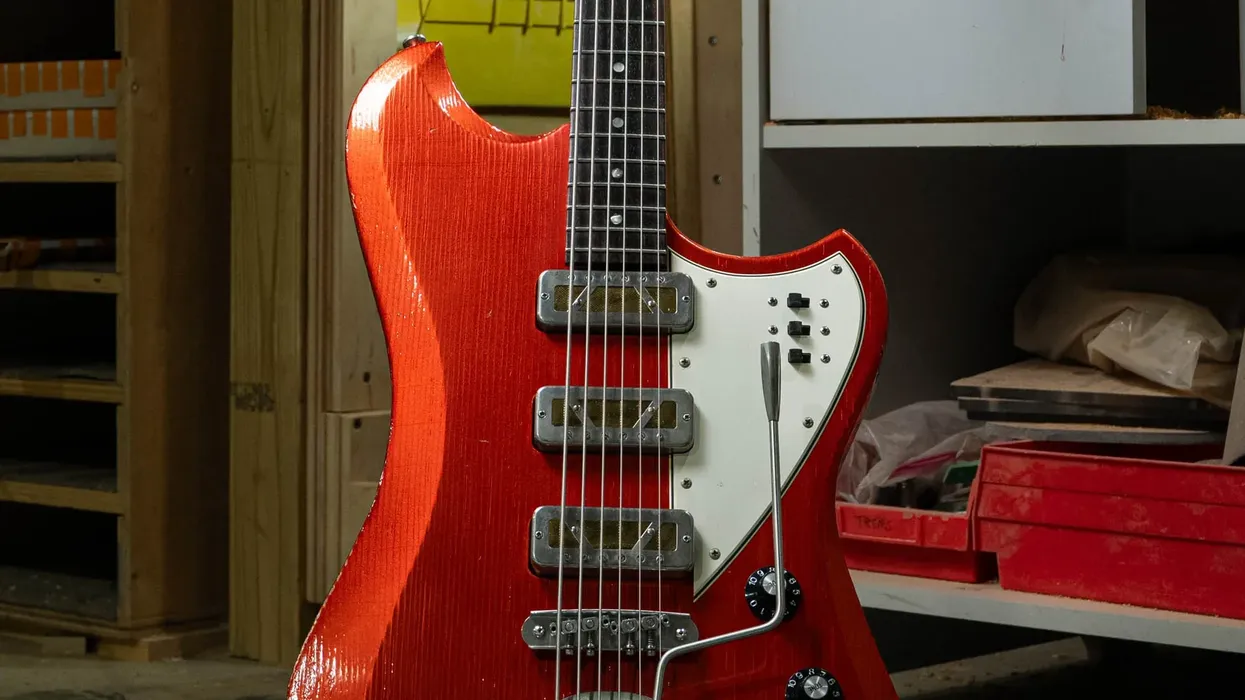
Nashville boutique guitar brand Novo was founded by Dennis Fano, of Fano Guitars fame, back in 2014. The two brands speak in similar design language and philosophy for obvious reasons, and Novo guitars have a style all their own. But like the first Fanos built by Dennis himself, Novo body shapes, finish schemes, and the feel of the instruments are prevailingly shaped by early and mid-’60s influences. Naturally these attributes shine when mated to the very Bass VI-like Voltur B6.
Origins of the Beast
A 6-string bass, unlike a baritone, is tuned exactly like a guitar, E to E—just an octave lower on a much longer scale. It’s likely the very first instrument built in this configuration was Danelectro’s UB-2 in 1956. But the famous evolution of the 6-string bass concept was introduced by Fender five years later, in 1961, and named the Bass VI. The Bass VI was never a common instrument, but it was, alongside the Danelectro, the choice for session players chasing the tic-tac sound, which mixes the percussive pick attack from a guitar and an upright bass. Six-string basses are all over genuinely classic tunes: “I Fall to Pieces” by Patsy Cline, “Wichita Lineman” by Glenn Campbell, and probably Elvis Presley’s “Jailhouse Rock,” which in 1957 became the first No. 1 hit in the U.S. believed to feature the 6-string bass. The Bass VI also turned up in the hands of artists like the Cure and Jack Bruce of Cream, and most famously was sometimes cradled by George Harrison and John Lennon while Paul McCartney tended to keyboards.
“It is really nice to see a manufacturer spend the time to develop such a refined take on the 6-string bass—premium price or not.”
For all the high-profile users and applications, Bass VI-type instruments like the Voltur B6 aren’t something too many manufacturers offer, and you see few in mainstream music. So, I was a bit surprised when my editor told me I would have the pleasure of reviewing one, and especially pleased it would come from such a renowned builder.
Luxury Accommodations
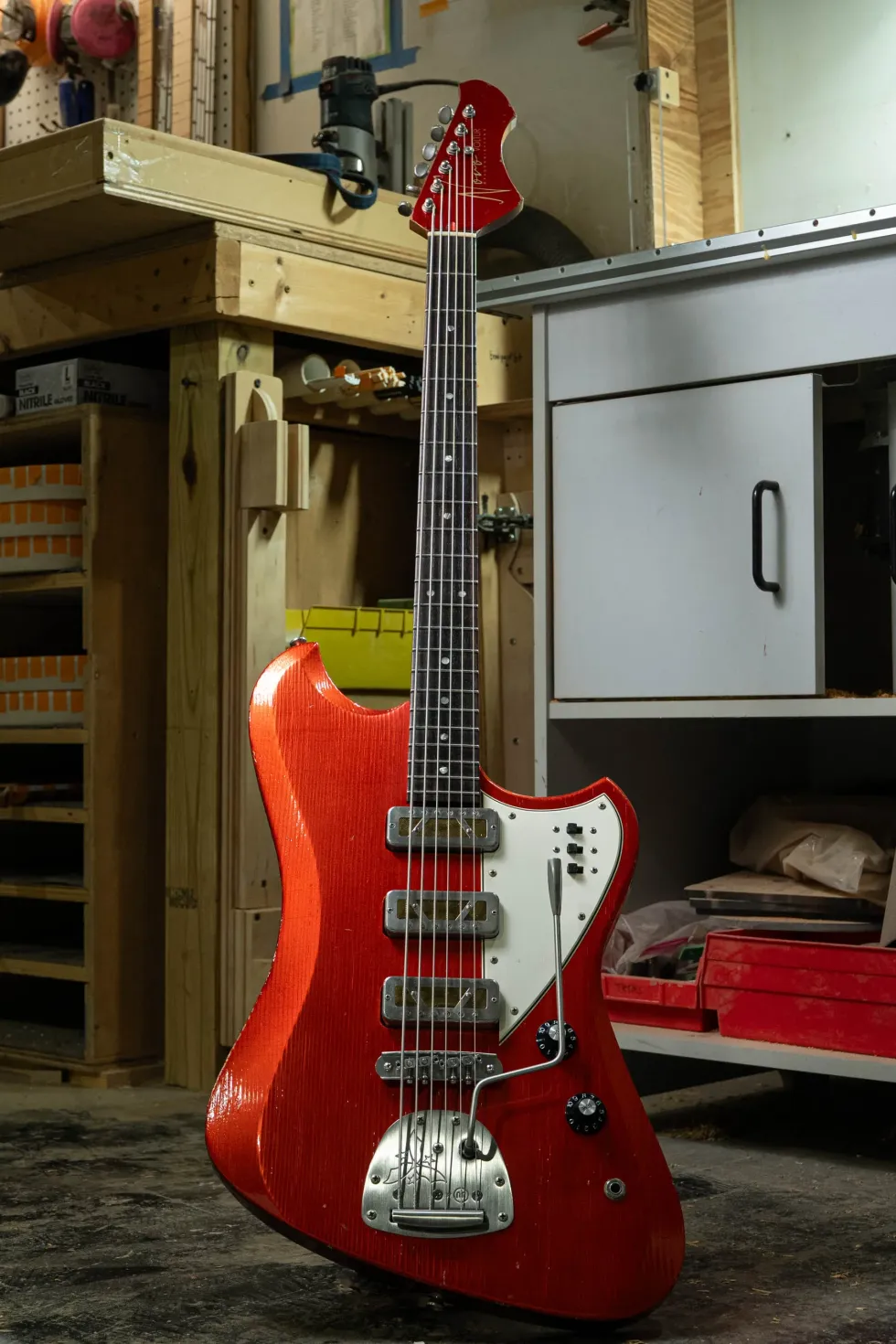
The Voltur B6 wows from minute one. It’s very stylish and well-made. And it is really nice to see a manufacturer spend the time to develop such a refined take on the 6-string bass—premium price or not. The finish is beautiful. Our review B6 came in a bold and attractive copper, but vintage-inspired paint jobs including Mary Kaye white, a very Gretsch-like nicotine blonde, a Silvertone-influenced starry night, and more are also available. The bass comes with three custom pickups by Lollar called Novo Gold Foils, which are visually distinctive for their almost industrial take on the vintage gold-foil design. Along with controls for volume and tone there are three very Bass VI-like switches for selecting different pickup combinations. Another striking design feature is the pairing of a Mastery M1 bridge with a Mastery NV vibrato with a lightning bolt arm that echoes the design themes in the pickup covers. The very comfortable 30" scale is spanned with a custom set of .026 -.095 strings by Stringjoy. I felt instantly at home.
It’s a Bass, It’s a Guitar, It’s…
When I grabbed the Voltur B6, the bass player side of my brain told me instantly to utilize the chordal possibilities of the instrument, largely because as a gigging bassist I don’t get to explore that technique as much. Playing a simple arpeggiated pattern, the notes rang out clearly like a guitar, but with the punch and authority of a bass (clip 1). The action of the test instrument was ever so slightly high for my liking, but I believe that contributes to the punch in each note. As a massive fan of the single-note signature lines normally played on a baritone guitar, I wanted to try that type of treatment on a melody line played very close to the bridge, for a skinnier, almost surf-like tone. The tone that came out of the Voltur 6 with the bridge pickup had an antique glow and a touch of garage attitude (clip 2). I desperately wanted to play more with this approach, but I was also eager to give the Novo the tic-tac treatment (clip 3). I recorded a bass line using a hollowbody short-scale bass and rolled off all the highs in order to better hear and feel the unique pick attack from the Voltur B6 when I doubled it. The result was a sound all its own—tubby, but warm and certain to sit prominently in a mix.
The Verdict
For an instrument that could be considered nichey, the Novo Voltur B6 is ultra-versatile. The three pickups offer significantly different tones—all of which have many possible uses. It’s addictive, utilitarian, and opens up many unique musical paths. And after living with this instrument for a while, I’m captivated by the idea of getting one for studio use. Novo’s Voltur B6 definitely comes with a boutique-builder price at $4,499. But the bespoke quality you sense playing up and down the neck, or just looking the instrument over, is undeniable. For any bass player or guitarist interested in a tool that can transport you beyond the box, the Novo Vultur B6 could lead to unexpected treasures.
“Should anybody be remotely interested…” Noel Gallagher shares pics of his Oasis reunion live rig – and we are definitely maybe interested
“Bears clear indication of its historical significance”: Randy Rhoads’ Quiet Riot Les Paul – which features on the back cover of their debut record – expected to sell for up to $200,000 at auction
“I’m so sorry I couldn’t spend more time with you”: Jake E. Lee shares the last text he received from Ozzy Osbourne
![[L-R] Jake E. Lee and Ozzy Osbourne](https://guitar.com/wp-content/uploads/2025/07/Ozzy-Jake-E-Lee@2000x1500.jpg)
As the world reels in the wake of Ozzy’s Osbourne’s death earlier this week, artists from the rock and metal world and far beyond have been sharing their own tributes to the Prince of Darkness, who shaped the music world as we know it today.
Jake E. Lee – who served as Ozzy’s guitarist between 1982 and 1987 – has shared the last text he ever received from Ozzy. Jake E. Lee performed at Black Sabbath’s huge farewell show just a couple of weeks ago, despite admitting he hadn’t spoken to Ozzy in decades.
Sharing that the “finality” of Ozzy’s death is hitting him “in waves”, Lee notes that he didn’t properly catch up with Ozzy during the show. Ozzy’s text to him following the event was as follows:
“Hi Jake. I’m so sorry I couldn’t spend more time with you on the weekend but it was really chaotic. I would really like to see you when I eventually get back to LA just to shoot the shit, it’s been so long since we saw each other. Where are you living these days? Because last I heard you were living in Las Vegas. How did the gig go for you on Saturday? I really hope you had fun anyway. I will text you when I eventually get back to LA and we must hook up. Much love and respect, Ozzy.”
Still processing it. The finality of it hits me in waves. This was a text I got from him as I was sitting in an airport…
Posted by Jake E Lee's Red Dragon Cartel on Wednesday, July 23, 2025
During his Back to the Beginning appearance, Lee covered tracks like The Ultimate Sin and Shot In The Dark, solo tracks by Ozzy that he featured on during the ’80s. He replaced Ozzy’s previous guitarist Randy Rhoads and played on the 1983 release Bark at the Moon and The Ultimate Sin in 1986. In a 2022 Stereogum interview, Ozzy finally revealed why he fired Lee from the band back in the 80s: “Jake E. Lee was a fucking great guitar player, and the way it went was, Randy Castillo, my old drummer, had started to turn me against him. It was very sad because I had no qualms with the guy. He was a great guitar player.”
Following Ozzy Osbourne’s tragic death earlier this week, his Black Sabbath bandmate Tony Iommi reflected on the band’s final show, noting that “he really just held out to do that show”.
“He’s built up for it for a while now,” Iommi said. “He’s been sort of training and trying to do what he can, so he could do this gig, so he could do it. And that’s really what he wanted to do. I think he must have had something in his head that said, ‘Well, this is gonna be it, the last thing I’m ever gonna do.’ Whether he thought he was gonna die or what, I don’t know. But he really wanted to do it and he was determined to do it. And fair dues, he’d done it.”
The post “I’m so sorry I couldn’t spend more time with you”: Jake E. Lee shares the last text he received from Ozzy Osbourne appeared first on Guitar.com | All Things Guitar.
“I felt a connection to the space and all that happened there before me. I immediately opened my guitar case and started writing”: Al Nesbitt & the Alchemy deliver a genre-spanning EP inspired by a mysterious L.A. hotspot, Al Di Meola and John McLaughlin
Crazy Tube Circuits Releases Mirage
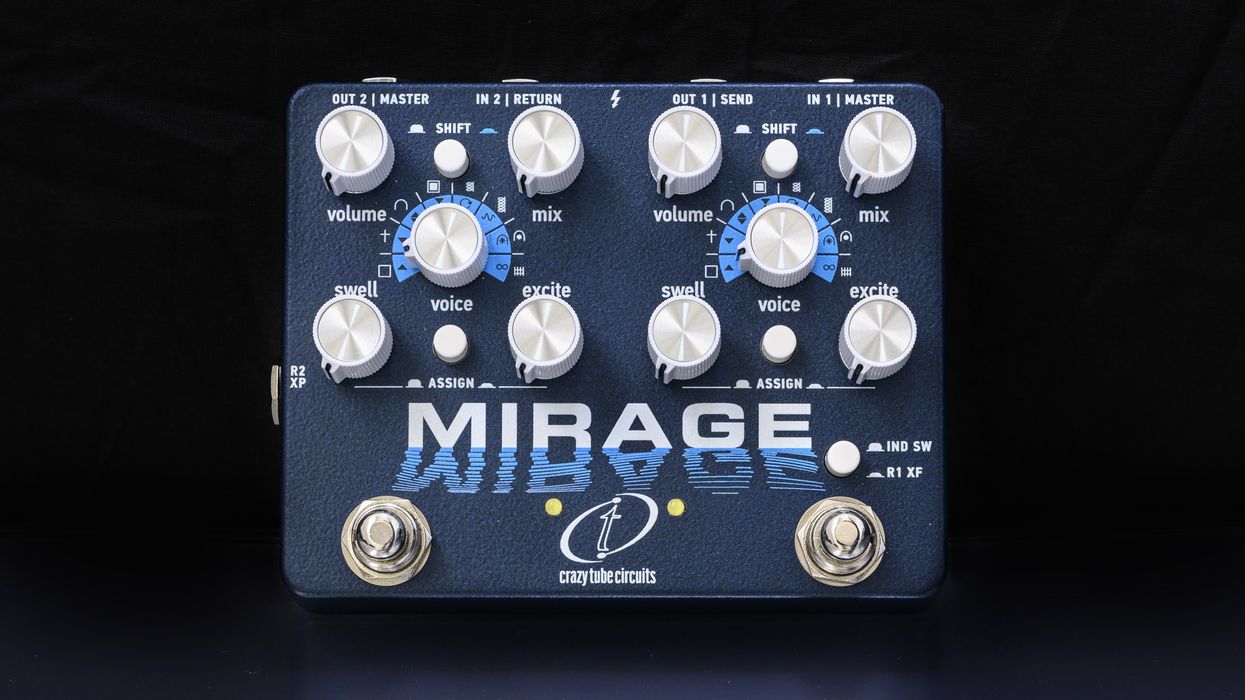
Mirage is a dual reverb workstation that goes far beyond traditional stomp box boundaries. Built around two fully independent engines - R1 and R2 - Mirage offers studio-grade processing, intuitive controls, and a remarkably flexible layout that appeals equally to sound designers, gigging musicians, and ambient explorers. Whether you're stacking two reverbs for depth, splitting engines across stereo channels, or dynamically morphing textures live, Mirage is built to perform.
Each engine can load one of 16 distinct reverb algorithms, organized into two banks. The Outer Bank focuses on natural, familiar reverbs: Plate, Spring, Cathedral, Room, Gated, and even the mythical Inchindown oil tank impulse (the longest recorded reverb in nature) - ideal for players looking to recreate spaces found in vintage recordings or real-world acoustics. The Inner Bank unleashes modern, ambient-driven effects: shimmer in various configurations (up, down octaves, blended, pitch-shi ed), modulation and echo based reverbs and infinite trails with the twist of a knob.
Each reverb engine has four dedicated knobs: Mix, Volume, Swell, and Excite. Swell typically controls decay or size, but some algorithms use it creatively - like gating time or freeze triggering. Excite is context-sensitive and adapts per algorithm: from shimmer balance to modulation depth, octave volume, or tone shaping. A Shi Push Switch toggles between the two algorithm banks, while a Voice Selector chooses the algorithm for each engine - no menu diving, just hands-on, instant access.
Routing is one of Mirage’s standout features. With series routing, you can stack the two reverb engines for massive atmospheric depth or use each engine independently for 2 mono reverb presets - engaging either footswitch as needed. Want to insert another pedal between the two engines? The SEND/RETURN loop between R1 and R2 is perfect for adding modulation, delay, filters, or even distortion/fuzz pedals for expanded textures.
Choose stereo or separate routing to process L and R channels independently, assigning distinct reverbs to each - or dial in slight differences on the same algorithm to widen the stereo image. You can even run two completely independent mono setups, each with its own activation footswitch. This is especially handy for one acoustic and one electric guitar setups, dual mono synth setups or setups using an external looper or switcher system. There’s also a Mono In/Stereo Out (MISO) mode, ideal for mono guitars, synths, or front-of-house reverb sends.
Internal switches on the back panel offer deep customization without the hassle of so ware editors. Choose between true bypass or buffered trails, activate Kill Dry for parallel rigs - send (aux) effects in the studio, and configure routing via the Assignment Switch (SOS or MISO).
Footswitch behavior is just as smart. In Independent mode, each footswitch toggles its engine on/off. In R1 XF mode, the right footswitch becomes a momentary controller that ramps either R1’s Swell or Excite to full - then returns it smoothly when released. Use it to perform bloom swells, shimmer bursts, gated punches, or on-the-fly freeze. Assign control via the R1 Control Assign Switch. You can also map an external expres
sion pedal to R2’s Excite or Swell using its own switch - the XP input accepts standard TRS expression pedals (up to 100k)
Despite all its power, Mirage is fast and intuitive. There are no menus, no screens - just direct access to deep features with a layout that invites experimentation. Mirage even remembers your power-up state (bypass or active) for seamless integration on stage or in studio.
Full Feature List
- Dual independent reverb engines - Dedicated controls per engine for hands-on shaping.
- Flexible routing setup: mono in series, stereo, independent dual mono, or mono to stereo configurations - easily adapts to complex gear rigs or in the studio.
- SEND/RETURN loop between engines - insert pedals between reverb stages for enhanced routing.
- 16 total algorithms split into two intuitive banks: vintage/classic and ambient/experimental.
- Studio-grade signal path with high headroom, clarity, and detail. Analog-dry signal path.
- Flexible footswitching modes - independent engine toggling or real-time ramp expression.
- Assignable external expression pedal input.
- Internal switches for routing and bypass mode selection.
- Direct, playable interface for instant creative results - no menus to navigate.
- Power supply (not included): Use an isolated 9V DC, 2.1 mm x 5.5 mm, center negative power supply.
- Max current consumption 210mA.
- Click-less true bypass design via high quality relay or buffered bypass with reverb trails.
- Power-up bypass/engage preset function for the footswitches.
- Top mounted jacks.
- Dark Abyss Blue die-cast enclosure.
- Compact, rugged enclosure - designed for road use without sacrificing control layout.
- (W x L x H) : 123 x 97 x 54 mm.
- Weight 457 g.
- Made in Greece.
A Gretsch given away by Jimmy Page in a 1974 NME Magazine competition is headed to auction – and could fetch up to £50,000

A guitar once owned by Jimmy Page and given away by the Led Zeppelin man as part of a competition – hosted by none other than our sister title NME in 1974 (then New Musical Express) – is headed to auction.
As the story goes, the guitar – a 1957 Gretsch Chet Atkins 6120 electric – was the prize in a competition titled ‘Win Jimmy Page’s Own Guitar’. That edition of the magazine featured a photo of Page in cricket whites holding the competition guitar like a cricket bat.
The guitar was originally bought by Jimmy Page in Nashville in 1972 for £200, approximately £2,373.78 in today’s money, according to the Bank of England.
But the guitar found itself to be the prize of the NME competition two years later. The rules of the competition were such that entrants had to match six iconic guitars with the famous guitarists who owned them. The ultimate winner was Charles Reid of Hornsey, north London.
 Credit: Gardiner Houlgate
Credit: Gardiner Houlgate
At the time, Reid was quoted as saying: “Page must be mental giving away such a terrific guitar as this. It’s the kind of instrument that every guitar player dreams of owning but can never really afford.”
After owning the guitar for over 15 years, Reid sold it to Phil O’Donoghue of Chessington, Surrey in 1990 for £2,000. The guitar remained with O’Donoghue until his death earlier this year, and is now being sold by his family.
While £2,000 in 1990 would be worth approx. £4,956.28 today, the guitar’s provenance means it’s expected to fetch quite a bit more than that when it sells in the near future through Gardiner Houlgate. The Corsham auction house estimates that the guitar could sell for between £30,000 and £50,000.
 Credit: Gardiner Houlgate
Credit: Gardiner Houlgate
Auctioneer Luke Hobbs explains: “Very few of [Jimmy Page’s] guitars come up for auction and when they do, they attract huge interest from collectors, investors and fans of Led Zeppelin.”
The winning bidder will not only receive the guitar, of course, but also a copy of NME showing a photo of Page giving the guitar to Reid, as well as correspondence and receipts linked to the giveaway.
The auction itself will take place at Gardiner Houlgate, 9 Leafield Way, Corsham, Wiltshire, SN13 9SW on Tuesday, 9 September, but will also be available for public viewing on 5 and 8 September from 9am-5:30pm, too.
For more information, head to Gardiner Houlgate.
The post A Gretsch given away by Jimmy Page in a 1974 NME Magazine competition is headed to auction – and could fetch up to £50,000 appeared first on Guitar.com | All Things Guitar.


